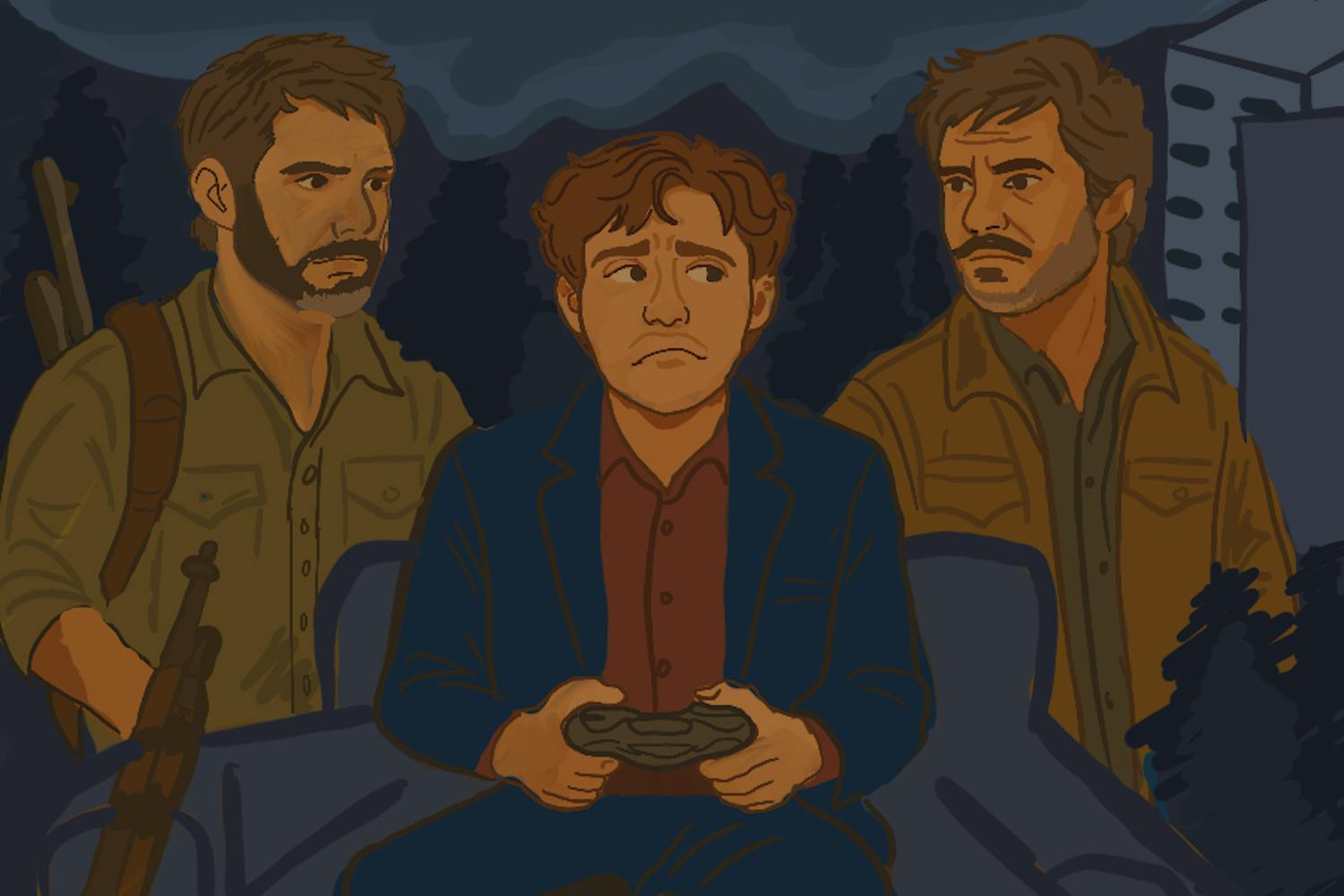[slideshow_deploy id='157505']
Nothing prepared me to fight back tears in the well-lit lower gallery of the Phoenix Art Museum at 10 a.m. on a recent Wednesday morning. In relatively bright spirits, I traced a logical counter-clockwise path around the “Vanitas: Contemporary Reflections on Love & Death” exhibit, arriving at a “Gilles and Gotscho,” a quintet of framed cibachrome prints in the southeast corner. That’s when the central theme of the exhibit — death — became uncomfortably real.
In these five photographs, one man gradually loses a battle to AIDS while his partner watches helplessly. My eyes wandered down to the final frame — a kiss bestowed on a love lying frail in a hospital bed — and an unexpected mixture of emotions blossomed in my chest. My vision blurred, and I easily could have lurched from a precipice into the abyss, but the authoritative click of a nearby security guard’s shoes reminded me that I was (unfortunately) not alone. There’s a social order, people.
You’re going to die. Don’t let that harsh your mellow, though. When staring down the inevitable, we might as well form an artistically fruitful, if not friendly, relationship with the end that awaits us all. Through art, we might be able to confront such darkness in liberating, solacing ways.
At least, that’s the respite offered by the 74 pieces culled from the private collection of Stéphane Janssen on display until Feb. 8 in the Marshall and Hendler Galleries of the Phoenix Art Museum.
The vanitas movement of art — Latin for vanity — fixates on the meaninglessness and impermanence of beauty and earthly life, typically through the still-life form and often including the skull (you know, as a reminder of death’s certainty) as its core symbol. Popularized in Flanders and the Netherlands in the 16th and 17th centuries, two centuries after the Black Death obliterated between 30 and 60 percent of Europe’s population, the rise of vanitas marked an increasingly morbid fascination within the world of art.
The macabre allure of death has not faded, and no contemporary reflection on vanitas can skirt the HIV/AIDS crisis that’s claimed over 30 million deaths worldwide since its initial appearance in 1981. Thirty years later, an HIV/AIDS diagnosis is not a death sentence; however, the initial horror of the disease still lurks in the shadows, influencing contemporary artists’ ideas and forms of death’s representation.
The experience of HIV/AIDS and the queer subject are strong threads in this exhibit, no doubt informed by the experience of Janssen, who lost his partner Michael Johns to the disease. “In 1988, after Michael was diagnosed HIV positive, of course AIDS was very much on our minds. But we both considered that, as everybody dies, it would be better to be friendly with the subject,” Janssen said in the exhibition catalog.
Janssen began collecting art as a youngster, and some of the earliest additions to his collection came from the CoBrA school, a European avant-garde movement from 1948-51 that favored the complete freedom of form and color. When he was 22 years old, he moved to Mexico for six months, where he developed an intense attraction to the Mexican attitude toward death and the art that came from a more optimistic mindset.
With “Vanitas,” however, we are not at all limited by the experience of Janssen — or even a single cultural or artistic perspective. Despite the clear individual hand that guided the collection of these works, their collective atmosphere is universal. Works varies from the macabre child skeletons of the French Jean-Baptiste Huynh to the tattoo work of the Belgian Wim Delvoye to the work of original selfie master, American Cindy Sherman.
I found myself returning again and again, however, to the two featured photographs of Robert Mapplethorpe, the deliciously controversial photographer who died of complications from AIDS in 1989. In one, “Robert Mapplethorpe in Bed at the Chelsea #2,” Judy Linn captures a virile and seductive 24-year-old Mapplethorpe after his first New York exhibition, just on the cusp of being thrown into the spotlight.
Just to the right of this photograph, you can make out a very different photograph of Mapplethorpe on the eastern wall of the gallery. In his “Self-Portrait,” we see him dressed in all black, his head floating amid the black as he clutches a staff topped with a skull. One year before his death, Mapplethorpe stares down his fate with resolve. It sends chills down your spine to see such an unadulterated representation of the slide from virility and ripe sexuality to death’s door within two juxtaposed photographs.
Even to the untrained observer (after all, do any of us feel “trained” to “understand” art like we are “supposed” to?), the aura of this exhibit is infused with raw emotion, distilled into the beautiful and bitter recognition that the subject of these works is our indelible end. They remind us — with their vibrant colors and morbid subjects — that we are alive now, gifted with the ability to recognize the immeasurable value of our human experience.
Such are the grand thoughts that swelled within your reporter as he made one last, meandering path through the exhibit. On my way to the stairs, I wanted to walk up to the stoic security guard who’d halted my tears earlier and ask, “Isn’t it so bizarre? Here we are, surrounded by death, and somehow I feel so incredibly alive.”
“Vanitas: Contemporary Reflections on Love & Death from the Collection of Stéphane Janssen” is on display at the Phoenix Art Museum until Feb. 8, 2015.
You can visit the Phoenix Art Museum Wednesday from 10 a.m. — 9 p.m., Thursday-Saturday from 10 a.m.— 5 p.m. or Sunday from 12 p.m. – 5 p.m.
Student admission (with ID) is $10.
Reach the reporter at zachariah.webb@asu.edu or follow him on Twitter @zachariahkaylar.
Like The State Press on Facebook and follow @statepress on Twitter.



